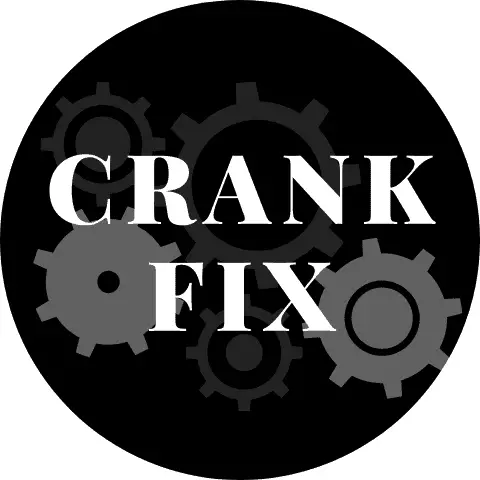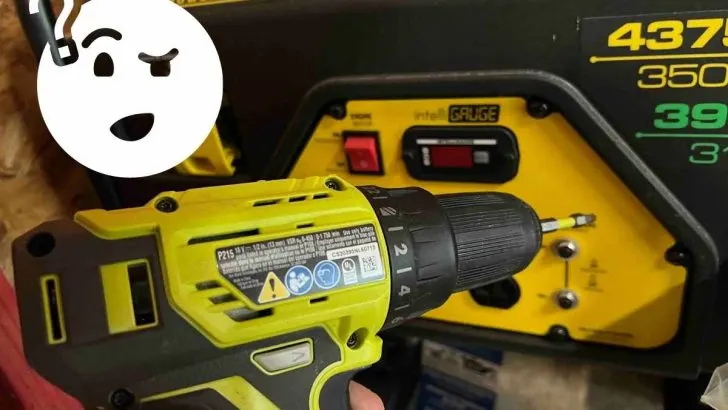Having your pull cord break or fail when you need power from your generator can be frustrating. When that happens, you may wonder whether there are other alternatives to starting your alternative electricity source.
You can start a generator with a drill when your pull cord fails you. A drill lets you access power without much hassle as it turns the generator’s motors. However, this is not a safe approach and can cause injury.
I’m going to go over how people start their generators using a drill so that you clearly understand what they are doing. However, I am not supportive of this approach. So, don’t just read the steps to do this. Keep reading to learn better ways to start a generator when the pull cord is not working.
How To Start a Generator With a Drill (And Why You Shouldn’t)
Using a drill to start a generator may sound impractical at first. But the science behind it is pretty simple. Similar to pull cords, drills use external motion to cause the generator’s rotating rotor to spin, generating electrical energy.
Here’s a quick demonstration of this principle from a short YouTube video:
If you wanted to start a generator with a drill, here’s a step-by-step guide on the process.
1. Ready Your Generator
The first step to starting your generator using a drill is ensuring all its compartments are ready. The process is pretty similar to turning on a generator using its built-in pull cord: Turn on the generator switch, pull the choke on, and open the fuel valve.
2. Find an Appropriately Sized Socket
After prepping the generator, the next step is to ensure you have the correctly sized socket to fit the generator’s nut. Generator manufacturers use different-sized nuts for their devices. Therefore, it’s essential to have as many drill sockets as possible to find the appropriate fit.
Socket sets such as the Dewalt Impact Socket Set (available at Amazon.com) can come in handy for that scenario. The standard pack contains 23 drill socket sets with DirectTorque technology to provide a tight grip. You can also choose between the 34-piece and 71-piece options for a higher likelihood of finding a good fit.
If you want to find the right-size socket for your generator, remove the shroud from the generator’s starter motor to double-check what kind of nut is on the attachment center. Fit different-sized drill sockets on the nut until you eventually find one that fits the nut perfectly.
3. Set the Up Drill
Once you’ve found a perfectly fitting drill socket, set the drill by connecting a breaker bar connector to the drill. Connect the drill socket to the end of the breaker bar connector by setting the drill to a slow speed.
After this step, your drill is ready to connect to the generator nut.
4. Rotate the Generator Motor
Position the socket end to the generator nut, turn on your drill, and pull the trigger. Let the drill rotate at a high velocity at the nut. It might take a few tries to pick up, but the motor will eventually begin turning, starting your generator. Make sure you pull your drill out immediately after the generator starts.
Safety Tip: Whenever I’m using a drill against significant pressure, I always torque it against a wall or something unmovable. This keeps it from twisting during a lockup which can really sprain your wrist. I learned this trick while drilling holes through ceiling plates in an attic. When I pressed the drill handle against a ceiling joist in the direction of rotation, the drill would lock against the ceiling joist making it safer and easier to control.
Precautions When Starting a Generator With a Drill
Although the steps seem straightforward, starting your generator using a drill can be quite dangerous. There’s a risk of damaging your equipment and injuring yourself. Therefore, it’s essential to take the necessary precautions.
Here are safety tips to help you through the process.
Use a Firm Grip
Before pulling the drill trigger to rotate your generator motor, double-check to make sure the socket is firmly fitted to the nut. This ensures the drill remains stationary and doesn’t jerk off from its position during the rotation process. If the drill doesn’t stay in place, it could cause wrist injuries and damage to your drill.
To stay safe, use a right-angle drill rather than the conventional pistol drill. A right-angle drill is perfect for newbies starting their engines since you grip it from the side with your thumb on the trigger, offering maximum stability.
The Milwaukee 2415-20 M12 Cordless Drill (available on Amazon.com) is perfect for starting a generator without a pull cord. This product has an extended paddle switch which allows it to be used in multiple positions, providing comfort and stability. Also, if you’re working in low light conditions, the built-in LED will improve your visibility and safety.
Pull Your Drill Away
Always remember to remove your drill from the generator as soon as it starts. That’s because drills spin way slower than generator motors. This difference in spinning speed puts you at risk of breaking your wrist if you hold on to the drill too tightly.
Also, the generator might throw your drill across the room, damage your tool, or injure you.
Why You Really Don’t Want To Start Your Generator Using A Drill
As I said, this approach can technically work. The problem is that you are really creating an unfavorable risk/reward scenario when doing this. It is SO EASY to injury yourself.
Watch this video from Steve’s Small Engine Saloon (I love this guy). He demonstrates the process and exactly why you don’t want to use this approach:
And since Steve is such an awesome teacher, let’s watch the video where he shows a safer approach to getting your generator started if the pull cord system is malfunctioning.
Note that I have never used this technique or watched anyone use it but it’s a sound approach to getting a generator started:
With all of this said and done, the point of these approaches is not to replace the use of the pull cord but to get you by in a pinch if the pull cord mechanism fails. Ultimately, I recommend getting the pull cord system repaired or replaced as soon as feasible so that you aren’t having to do any of this long-term.
Reasons Your Generator May Fail To Start
In some cases, you may have followed all the necessary steps when using a drill to power up your generator, but the latter fails to start. When that happens, it might be for the following reasons:
- The generator has no fuel. Generators cannot operate without fuel. So always check your gas tank to ensure your generator is adequately fueled before attempting to start it.
- Clogged carburetor. If you haven’t used your generator in a while, the fuel residue may clog your carburetor, causing your device to malfunction. Ensure you clean your carburetor or replace it if the clogs have caused irreparable damage.
- Faulty spark plugs. If your spark plug doesn’t work correctly, it cannot produce sparks to combust fuel and start your generator. Therefore, replace faulty spark plugs to ensure your generator starts on ignition.
Conclusion
A drill can provide an alternative to starting your generator if you have faulty pull cords. However, it would be best to take precautions when using this technique. I strongly recommend getting the pull start repaired or replaced and not treating this as a “forever” solution as some people proclaim it to be.
Recommended Reading:

